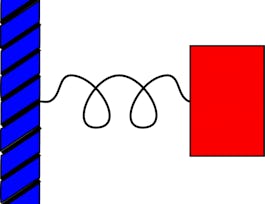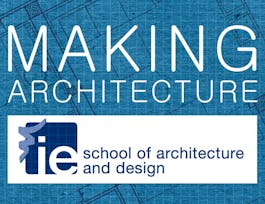This course deals with tension. Tension is one of the easiest forces to understand. It is a pulling force. When we tend to pull an object, it is in tension. Different elements that resist tension in buildings are ropes, cables, and funicular forms. You will study different structures and identify what role tension plays in their designs. The first module explores tension and its importance in building structures.



Engineering of Structures: Tension
This course is part of The Engineering of Structures Around Us Specialization

Instructor: Vicki May
Sponsored by IEM UEM Group
3,152 already enrolled
(60 reviews)
Recommended experience
What you'll learn
Define tension
Recognize the role of ropes and cables in sustaining tension
Identify the definitions of the key glossary terms related to tension
Recognize the role of funicular forms in structures
Skills you'll gain
- Architectural Engineering
- Building Services Engineering
- Analytical Skills
- Construction Engineering
- Civil and Architectural Engineering
- Critical Thinking and Problem Solving
- Architecture and Construction
- Civil Engineering
- Structural Analysis
- Critical Thinking
- Structural Engineering
- Architectural Design
- Drafting and Engineering Design
Details to know

Add to your LinkedIn profile
3 quizzes, 8 assignments
See how employees at top companies are mastering in-demand skills

Build your subject-matter expertise
- Learn new concepts from industry experts
- Gain a foundational understanding of a subject or tool
- Develop job-relevant skills with hands-on projects
- Earn a shareable career certificate


Earn a career certificate
Add this credential to your LinkedIn profile, resume, or CV
Share it on social media and in your performance review

There are 3 modules in this course
This module explores tension and its importance in building structures.
What's included
2 videos9 readings3 assignments
This module explores funicular forms, angles, and bridges. You will understand the role of funicular forms in sustaining tension, how to best design elements and systems that resist tensile forces. You will also understand the similarities and differences between suspension bridges and cable-stayed bridges
What's included
7 videos8 readings1 quiz4 assignments1 plugin
This module explores how to build a cable-stayed bridge. You'll also study the structures of different bridges and share a report on them.
What's included
1 video4 readings2 quizzes1 assignment3 discussion prompts
Instructor

Offered by
Why people choose Coursera for their career




Learner reviews
60 reviews
- 5 stars
90%
- 4 stars
8.33%
- 3 stars
1.66%
- 2 stars
0%
- 1 star
0%
Showing 3 of 60
Reviewed on Sep 28, 2024
Pretty excellent,helps to understand basic concepts of tension. And the example for the application on the bridge with its different type makes the lesson rich in knowledge.
Reviewed on Sep 27, 2023
helpful for revising the concept of Tension, Tension members, Cable-stayed bridge, suspension bridge. helpful for stuctural engineers.
Reviewed on Mar 31, 2024
It was a great experience. The concept of 'tension' is explained excellently using some very common, real-life examples.
Recommended if you're interested in Physical Science and Engineering

Arizona State University

The Hong Kong University of Science and Technology

IE Business School

University at Buffalo

Open new doors with Coursera Plus
Unlimited access to 10,000+ world-class courses, hands-on projects, and job-ready certificate programs - all included in your subscription
Advance your career with an online degree
Earn a degree from world-class universities - 100% online
Join over 3,400 global companies that choose Coursera for Business
Upskill your employees to excel in the digital economy


